Shin Godzilla: A Modern Kaiju Masterpiece
Released in Japan on July 29, 2016, “Shin Godzilla” exploded onto screens as a breathtaking science fiction disaster film, single-handedly re-energizing the legendary monster franchise. Conceived and written by the visionary Hideaki Anno, who also co-directed alongside Shinji Higuchi, this cinematic tour de force brought a new, terrifying iteration of Godzilla to an eager global audience. The film boasts a powerhouse ensemble cast, featuring compelling performances from actors such as Hiroki Hasegawa, Yutaka Takenouchi, and Satomi Ishihara, who expertly navigate a bureaucratic nightmare amidst an existential threat.
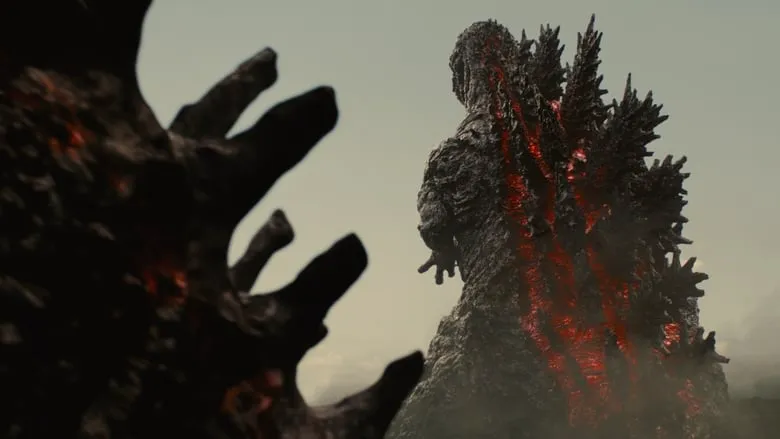 The striking official poster for “Shin Godzilla,” hinting at the colossal terror within.
The striking official poster for “Shin Godzilla,” hinting at the colossal terror within.
Production and Key Details
“Shin Godzilla,” known in its home country as シン・ゴジラ (Shin Gojira) and as “Godzilla Resurgence” in the US, spans a taut 119 minutes, primarily presented in Japanese with some English dialogue woven in. The esteemed Toho Co., Ltd. served as the production company, marking their dramatic return to the “Godzilla” universe after a 12-year hiatus, making this the 29th installment in their illustrious series.
Behind the scenes, the creative team was meticulously assembled to bring Anno’s unique vision to life. Hideaki Anno steered the ship as Chief Director and Writer, crafting some of the most compelling narrative elements. Shinji Higuchi not only co-directed but also masterfully handled the special effects. Producers like Minami Ichikawa ensured the ambitious project reached fruition, while Yuji Hayashida created stunning art direction. The evocative score, a blend of new compositions and classic motifs, was orchestrated by Shirou Sagisu. The film’s critical success was undeniable, culminating in an impressive seven awards at the 40th Japan Academy Awards in 2017, including the coveted Best Film and Best Director, along with four additional nominations such as Best Actor and Best Supporting Actress. Commercially, “Shin Godzilla” also demonstrated its prowess, grossing over $78 million worldwide by December 2022, according to Box Office Mojo.
An Unfolding Catastrophe: The Plot Synopsys
“Shin Godzilla” thrusts viewers into an immediate state of alarm when an unexplained eruption of steam and the collapse of an underwater tunnel send shockwaves through Tokyo Bay. This ominous event triggers an emergency government conference, where the astute Deputy Chief Cabinet Secretary Rando Yaguchi (Hiroki Hasegawa) dares to propose the improbable: the existence of a gargantuan, unknown creature lurking beneath the waves. His theory, initially met with skepticism by seasoned officials, including Hideki Akasaka (Yutaka Takenouchi), quickly transforms into horrifying reality.
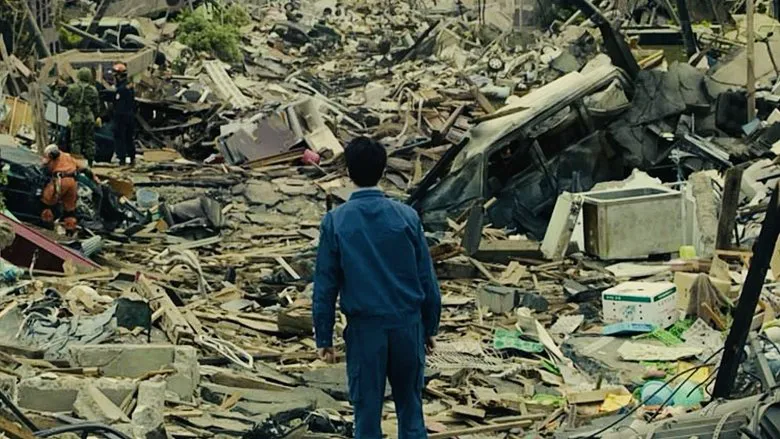 Japanese government officials convene in a frantic meeting, grappling with reports of an unprecedented anomaly.
Japanese government officials convene in a frantic meeting, grappling with reports of an unprecedented anomaly.
A colossal, primeval monster, subsequently christened “Godzilla,” makes its terrifying debut, emerging from the ocean to wreak havoc. In a desperate scramble to respond, Japan establishes the “Giant Unknown Creature Disaster Countermeasures Headquarters,” while the U.S. President dispatches the sharp and determined special envoy Kayoco Ann Patterson (Satomi Ishihara) to assess the escalating crisis. Scientific investigations soon reveal a horrifying truth: Godzilla is an evolutionary being, seemingly born from the devastating effects of nuclear radiation.
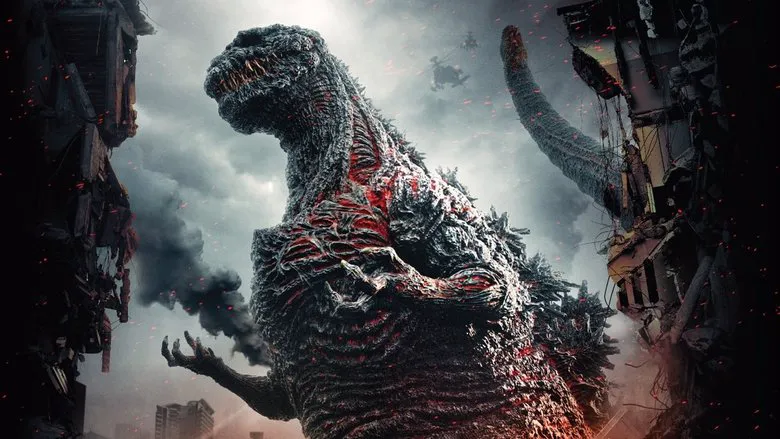 Godzilla’s unsettling second form emerges from the Tokyo Bay, an alarming sight for onlookers.
Godzilla’s unsettling second form emerges from the Tokyo Bay, an alarming sight for onlookers.
The beast resurfaces, now dramatically larger — towering at twice its original stature — and unleashes an unfathomable wave of destruction across major cities. The painfully slow and bureaucratic government response leads to widespread loss of life and property, tragically claiming even the Prime Minister and other high-ranking officials in its devastating wake of nuclear fallout. In a desperate attempt to curb the monster’s rampage, the Japanese military, reinforced by the U.S. armed forces, unleashes its heaviest weaponry, escalating the conflict to unprecedented levels. Threats of a nuclear strike against Godzilla by Allied nations loom large, presenting an even more dire potential future for Japan.
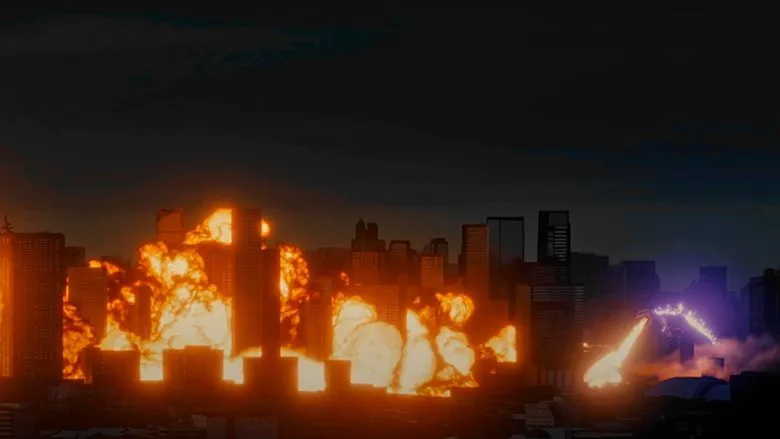 Shin Godzilla unleashes its devastating atomic breath, an iconic and terrifying display of its power.
Shin Godzilla unleashes its devastating atomic breath, an iconic and terrifying display of its power.
Against all odds, Yaguchi and a dedicated team of brilliant Japanese scientists formulate a radically bold plan: to freeze Godzilla. This audacious strategy, executed under immense pressure, miraculously succeeds, rendering the behemoth inert and submerged back into the deep. Yet, the film concludes with a chilling, unforgettable image: tiny, nascent Godzilla-like forms emerging from the creature’s tail, a haunting revelation that hints at potential proliferation and the unsettling truth that the battle for survival may be far from over.
Godzilla’s Striking Design & Visuals
At a staggering 118.5 meters tall, the Shin Godzilla stands as a towering, nightmarish entity, dwarfing even the previous iterations of the creature. Hideaki Anno’s design philosophy for “Shin Godzilla” was deeply rooted in the concept of a “complete organism,” an apex predator that had grotesquely evolved from all life on Earth. He meticulously envisioned a creature with “skin that looks like it’s about to decay,” famously using the textures of a bitter melon as a unique reference point for its corroded, visceral appearance.
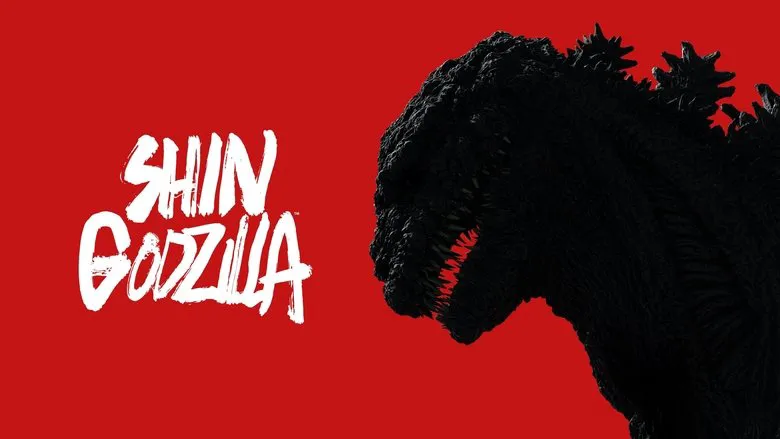 A close-up shot of Shin Godzilla’s chillingly human-like eyes and decaying skin texture.
A close-up shot of Shin Godzilla’s chillingly human-like eyes and decaying skin texture.
The monstrous head design drew inspiration from the ominous mushroom clouds of nuclear blasts and the classic silhouettes of the original Godzilla. Its body, predominantly black, is eerily marked with pulsating red patterns that suggest internal heat, as if its very blood is a volcanic magma constantly threatening to erupt. Anno’s most unsettling detail, perhaps, lies in the creature’s eyes, designed with a distinct human-like black-and-white ratio, a subtle yet profoundly disturbing choice which he described as “the most terrifying thing in living beings.”
Compared to its predecessors, Shin Godzilla emphasizes a grim biological realism. Its tail is noticeably thicker and disproportionately longer, serving as a critical third point of support to accommodate the creature’s immense, unnatural weight. While its main dorsal fins technically comprise three rows, their irregular and almost haphazard arrangement can visually give the impression of five or even seven rows, creating an even more intimidating and unpredictable silhouette depending on the viewer’s perspective.
Groundbreaking Special Effects & Iconic Soundtrack
“Shin Godzilla” audaciously departed from the familiar rubber suit effects that had long defined Japanese kaiju cinema. For the very first time in the franchise’s history at Toho, the titular monster was entirely depicted using full CG. This groundbreaking approach allowed for an unprecedented level of detail and dynamic movement. Crucially, motion capture technology was employed for Godzilla’s key movements, with renowned Kyogen performer and actor Mansai Nomura lending his unique movements to the creature’s 3D scanning, infusing the CGI with a tangible, unsettling physicality.
Adding another layer of masterpiece to the film is its powerful score, composed by the supremely talented Shirou Sagisu. The soundtrack is a magnificent tapestry that not only introduces new, impactful themes but also deftly weaves in elements from Akira Ifukube’s classic “Godzilla” scores, creating a resonant bridge between the past and present iterations of the kaiju legend. The soundtrack listing below offers a remarkable sonic journey through the film’s many intense moments.
Behind the Scenes Insights
The production of “Shin Godzilla” was as unique and meticulous as the final product. Actor Hiroki Hasegawa humorously recalled how director Hideaki Anno pushed the actors to speak at an unusually rapid pace, an intentional choice aimed at mimicking the fast-talking, often anxious mannerisms of real-life Japanese politicians and bureaucrats. This subtle detail added an unexpected layer of realism to the bureaucratic chaos depicted onscreen.
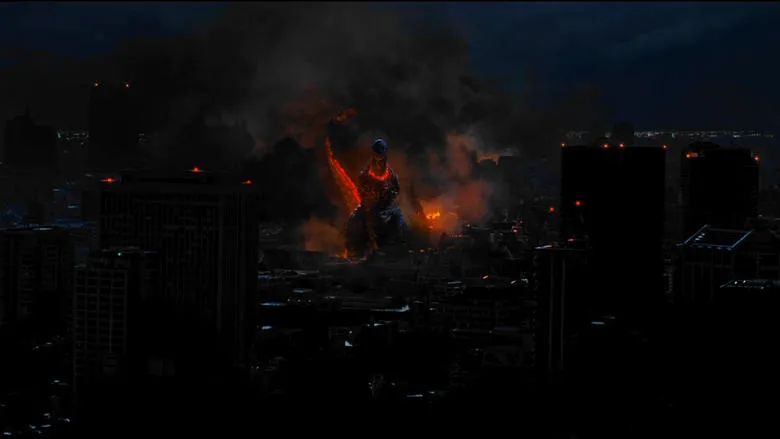 Military tanks stand ready in a city landscape, prepared to confront the towering threat of Godzilla.
Military tanks stand ready in a city landscape, prepared to confront the towering threat of Godzilla.
The cultural significance of Godzilla in Japan meant that the project elicited an overwhelming response from the acting community, with an astounding 329 actors eagerly accepting roles. This massive cast led to the jocular remark within the industry: “The actors have disappeared from Japan, except for the Godzilla set,” highlighting the immense scale of the production.
To ensure unparalleled authenticity, Anno went to extreme lengths, directly consulting with the Japanese government during the scriptwriting process. This collaboration allowed for meticulous corrections to any inaccuracies in protocols or logistical details. He also sought extensive assistance from the Japan Ministry of Defense, conducting thorough research into weapon usage, military engagements, and the precise language employed by Self-Defense Force personnel. The Ground Self-Defense Force provided invaluable support during filming, notably assisting with the visceral tank attack scenes, which were captured on location at the Fuji Firepower Review, lending an almost documentary-like realism to the explosive sequences. This dedication to realism, combined with visionary filmmaking, firmly cements “Shin Godzilla” as a modern masterpiece in the kaiju genre and a poignant reflection on disaster and governance.